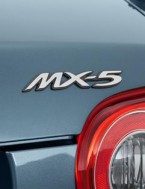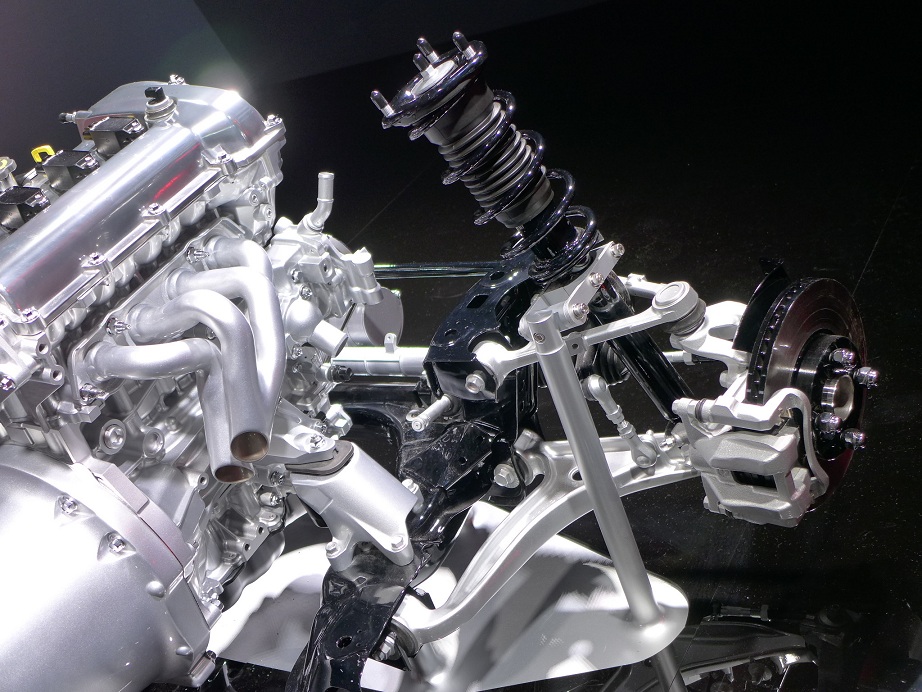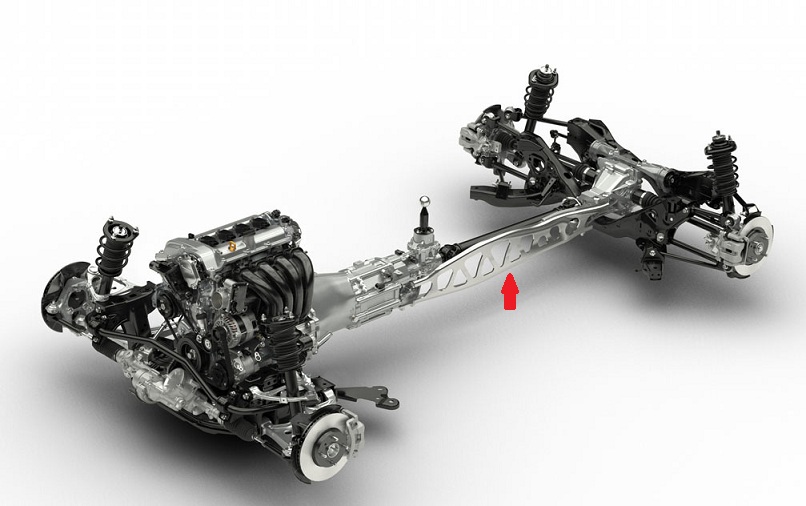
In part 1 of this article, we have talked about the Miata’s engine layout. Let’s continue with more analysis.
2. The front suspension. Many people can tell from the image that the Miata is using a double wishbone suspension. Many other similar sports car in the price range usually use the MacPherson suspension design; by using the double wishbone structure (of course it costs more to build), the Miata provides better value for the consumer.
However, story does not just stop there. Additionally you may notice that this is not a typical double wishbone suspension you will see in many production cars under $50k (which usually belong to the high-mounted double wishbone type). In fact, Miata has incorporated the low-mounted double wishbone design. The difference is not just the location of the upper A-arm; this is a fundamental difference for the load-carrying car body structure (uni-body).
If a car is using a high-mounted double wishbone suspension, the higher arm is connected directly to the strut tower; therefore the impact forces (from the road) from the wheels/suspension will transmitted directly to the monocoque car body. Since a convertible roadster has less torsional rigidity, this will cause larger body flex during high-load cornering, limiting the car’s handling.
By using a low-mounted double wishbone design like the Miata, the situation is totally different. The upper wishbone arm is not connecting to the strut tower; instead it is connected to the car’s front sub frame. The front sub frame can offset large portion of the suspension load forces, therefore the monocoque car body will have less stress from the suspension, and less body flex during maneuvering. Also the low-mounted upper arm decreases the height of the steering knuckle, which also lowers the unsprung mass.
3. Have you noticed the steel longitudinal beam that directly connects the front and rear sub frame? You will not see such design in most of the sports cars nowadays. This longitudinal beam not only strengthened the longitude rigidity of the car body, but also turns the front and rear sub frame into a whole solid entity. Actually, only very expensive high-end sports car will use such design.
In the below image, the red arrow highlights the longitudinal beam I have mentioned above.
For “normal” cars, if you remove the car body frame structure, then the engine, front suspension and rear suspension will also fall apart (because there is nothing connecting them together); but if you do the same thing to the Miata, the drivetrain and the front/rear suspension will still hold up, like a naked body-on-frame truck (without the occupant cabin attached to the frame). Actually, in their official documents Mazda refer the Miata platform to be a backbone layout, not a monocoque or unibody.
With all the above unusual and high cost design, the Miata’s MSRP only starts at $23,720, this is the reason why I say it is an “exotic sports car”.





Recent Comments